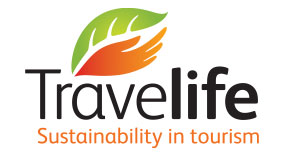How to create Tourism resilient in the times of calamities
Tourism across the globe has been significantly impacted by recent world events, including geopolitical conflicts, climate-related disasters, and economic instability. Wars and unrest in regions have led to travel advisories, restricted airspaces, and a general decline in tourist confidence. Simultaneously, extreme weather events such as floods, wildfires, and heatwaves—exacerbated by climate change—have disrupted popular destinations, forcing closures and reshaping travel patterns. Economic volatility and inflation have also tightened consumer budgets, leading to shifts towards shorter, local trips or budget travel. Together, these global dynamics are compelling the tourism industry to adapt rapidly, focusing more on resilience, sustainability, and flexibility in both operations and offerings.
Creating resilient tourism is essential to ensure the industry can withstand and recover from shocks such as pandemics, climate disasters, political unrest, and economic downturns. Tourism is highly vulnerable to external disruptions, and without resilience, destinations face long-term economic damage, job losses, and community disempowerment. Resilient tourism safeguards livelihoods, protects natural and cultural heritage, and ensures that travel experiences can continue sustainably even during crises. By building adaptive infrastructure, diversifying tourism offerings, empowering local communities, and prioritizing sustainability, we can create a tourism sector that not only survives challenges but emerges stronger and more equitable.
To build truly resilient tourism, it is essential to amplify local voices and prioritize community ownership at every level. Post-COVID recovery efforts must be rooted in the lived experiences and aspirations of host communities, whose cultures, livelihoods, and environments are most affected by tourism. Planning should be co-created with residents to ensure that their priorities shape the development process. Supporting small and micro businesses is critical, as they are often the backbone of the tourism economy yet operate without financial buffers. Investments in health infrastructure, microinsurance, and local entrepreneurship are key to strengthening their resilience. Community-based tourism models such as homestays, guiding collectives, and artisan cooperatives not only empower local people but also provide tourists with authentic, meaningful experiences. Additionally, the concept of conservancies—community-managed areas that protect biodiversity while generating revenue through tourism—has proven successful in balancing conservation with economic opportunity. These inclusive, locally-driven approaches help ensure tourism delivers long-term value, both for visitors and the communities they engage with.
Time forces us to move on to the path of regenerative tourism. Rather than minimizing harm, regenerative tourism actively restores ecosystems and strengthens community well-being . Travelers can contribute to coral restoration, reforestation, waste cleanups, or indigenous-led cultural projects, leaving lasting, positive impacts. Certification and monitoring sustainability is of key importance; Certifying via standards like TOFT PUG & Footprint, EarthCheck, Green Key, or B Corp helps verify green credentials for accommodations and activities . Embracing zero-waste and circular economies, accommodations eliminate single-use plastics and repurpose waste are more adaptable to supply chain disruptions and resilient to shocks .
Promoting slow and low-carbon travel is key to building resilient tourism, as it encourages longer, immersive stays and reduces reliance on air travel vulnerable to disruptions. Expanding sustainable mobility options like high-speed rail, electric vehicles, cycling, and public transit lowers emissions while enhancing connectivity. Resilient lodging models—such as community-run lodges, homestays and eco-retreats —help decentralize tourism, ease pressure on crowded destinations, and maintain operational flexibility during crise
Embedding smart technology and inclusive planning is vital for agile, equitable, and crisis-resilient tourism. Investing in tools like AI, Augmented Reality(AR)/ Virtual Reality (VR), and real-time data tracking enhances emergency response and visitor flow management. Inclusive strategies must democratize access through subsidized stays, rural tourism routes, and universal design for all travelers, including those with disabilities or age-related needs. Strategic regulation—such as visitor capacity but also reinforces sustainability and funds essential infrastructure and health system caps, congestion pricing, emissions mandates, and environmental taxes.
Building a resilient tourism system requires cultivating a shared community mindset and embedding continuous learning. Fostering mutual respect between hosts and guests promotes mindful travel that prioritizes community well-being over mass consumption. Educational campaigns can help tourists understand their impact through simple actions like reducing plastic use, respecting local customs, and supporting local businesses. Encouraging transformative travel—through volunteering, cultural immersion, and ecological restoration—deepens visitor engagement and promotes stewardship, shifting the focus from checklist tourism to purpose-driven experiences.
Linking tourism with conservation is vital to protect both biodiversity and local economies. Tourism pauses often lead to increased poaching and habitat degradation, making community-led conservation through ecotourism, wildlife monitoring, and stewardship essential. Promoting ethical wildlife experiences—favoring sanctuaries and responsible operators—ensures animal welfare and habitat protection. Additionally, tourism-dependent communities must diversify into alternative livelihoods like agriculture, crafts, or digital services to remain resilient during industry disruptions.
In summary, a truly resilient tourism strategy weaves together community empowerment, environmental stewardship, smart innovation, inclusive regulation, financial preparedness, and cross-sector collaboration. By amplifying local voices, embracing sustainable practices, leveraging smart technologies, and ensuring equitable access, the industry can weather crises and emerge stronger—transforming travel into a lasting, positive force for people, planet, and prosperity.
References





